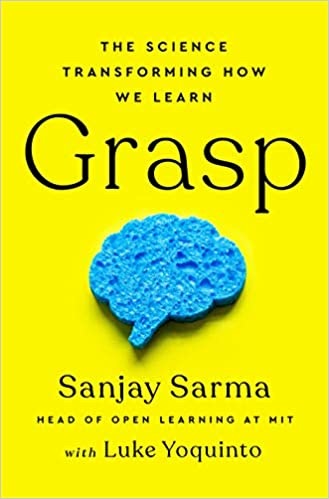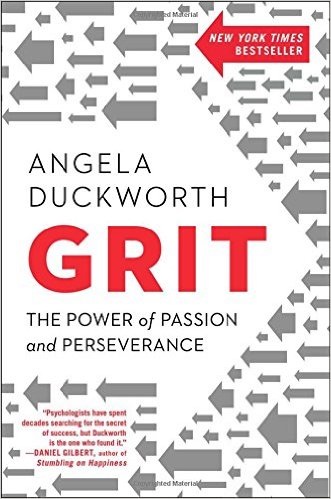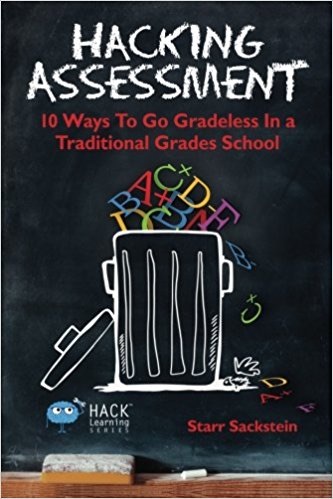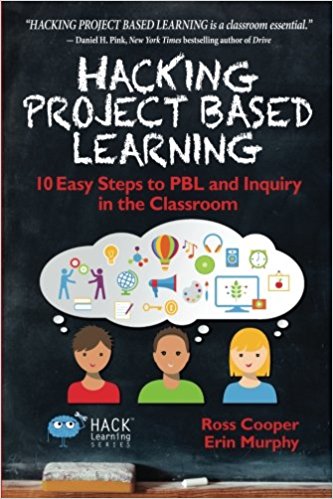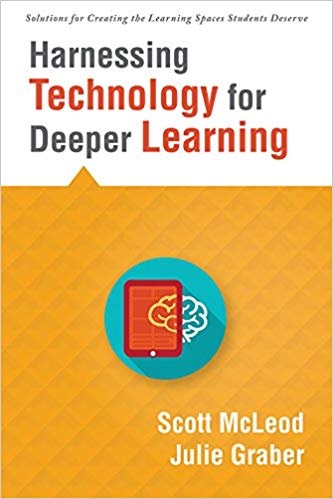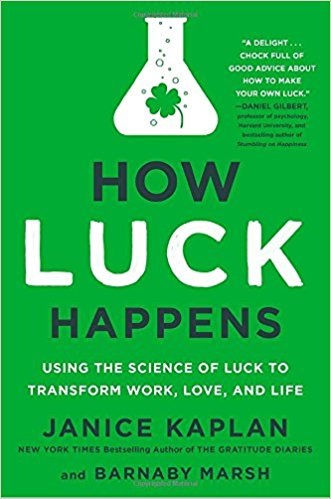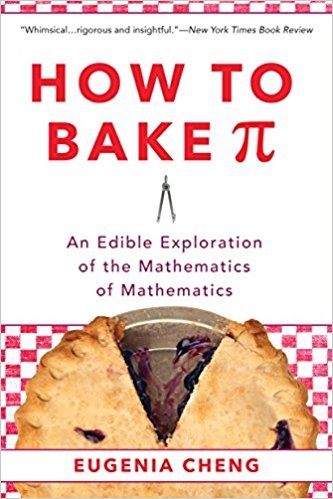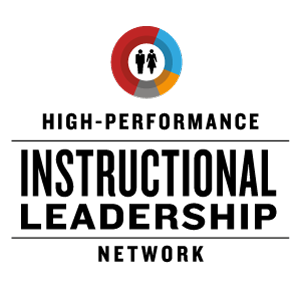Archive for the ‘Leadership Books’ Category
Monday, February 8th, 2021
Grasp: The Science of Transforming How We Learn by Sanjay Sarma with Luke Yoquinto tells the story of teaching and learning during the last hundred plus years. They explain what works and what doesn’t. They make it clear that learning should be spaced rather than crammed at the last minute, that different concepts should be interleaved, and that the effort one uses to retrieve memories helps reinforce them. While we need to teach hard facts, we also need to let students use their hands to wield them. This book is a must-read for teachers and learners alike and would make a great textbook for any introduction to education course.
Introduction: The Adventure Begins
- The big metaphor used here is the educational winnower. From the beginning, education is designed to sort students into gifted programs and elite schools. We think we are testing aptitude when we are mainly testing a student’s environment and experiences. At the end of the trail is the opportunity to innovate, which mostly ends up in the hands of males from wealthy homes (patent-holding inventors). In addition to gender, the great winnowers include poverty, expectations, and environments that lack access to language and feature lots of stress. In our efforts to standardize education we have made it too damn hard. We need to shed the myth that serious learning must be difficult and use what we know about the brain to make it more user friendly so we can save more students from the winnowing process.
Part One: Learning Is Science and Science Is Learning
1. The Learning Divide
- Through the lens of a robotics course at MIT we learn that any education scheme worth its salt must not only deliver knowledge but do so in a way that is highly engaging. It must activate that knowledge so its owner can do real work in the world. Next Sanjoy plots the path that education took from the beginning of the twentieth century away from the holistic approach of John Dewey towards the reductionist path of Edward Thorndike. This lead to standardized education where repetition ruled based to an extent on behaviorism. IQ tests were used to sort students into tracks and if you weren’t sorted into the college track, you weren’t going to be prepared for college. Not only is this approach racist and classist, but it also conflicts with how people really learn.
2. Layer One: Slug Cells and School Bells
- It is well established that spacing out your study rather than cramming all a once leads to more retention. This is even true for invertebrates without brains. Here we encounter Eric Kandel’s work with the large neurons in sea slugs. This lead to a Nobel prize for describing the connection between memory and the action of individual neurons. Repetition creates more connections known as synaptic strength. The concept of interleaving suggests that while you are putting space between learning efforts on the same content, you should work on learning another subject. It seems that universities feature a few high-stakes tests each semester with no return to the content in subsequent semesters in many disciplines. This goes against what we know about the spacing effect. Corporations, however, seem to know better as they teach and test frequently. This is due to the fact that their employees must understand the key concepts.. It’s clear that frequent low-stakes quizzes that continually call back earlier material promote efficient learning.
Posted in Book Summaries, Education Books, Leadership Books | Comments Off on Grasp: The Science of Transforming How We Learn by Sanjay Sarma with Luke Yoquinto
Monday, August 7th, 2017
Grit: The Power of Passion and Perseverance by Angela Duckworth shares her research and the work of others on the subject and explains that what we eventually accomplish depends more on our passion and perseverance than on our innate talent. This work can help you find your own passion and develop it. This is a vital book for parents, teachers, and human beings in general. Make sure your school library has at least one copy for starters.
1. Showing Up
- Angela starts with the story of her visits to West Point’s summer session for incoming freshman known affectionately as Beast Barracks. Due to the high dropout rate of plebs, the question was: what qualities are the best predictors of who makes it and who goes home early? The only metric the Army had was the Whole Candidate Score. It combined SAT/ACT scores, class rank, an expert appraisal of leadership potential, and performance on objective measures of physical fitness. The problem was that this score had no predictive value when it came to surviving the first summer or the full four-year program.
- What candidates needed it seems, was a never give up attitude, which had nothing to do with ability. When Duckworth heard this she decided to create an instrument to measure it. She then created the Grit Scale, which is included on page 55. She found that it was a good predictor for West Point. It also turned out to be a good predictor for other accomplishments such and earning college degrees. She found that there was no relationship between IQ and grit.
2. Distracted By Talent
- As a teacher early in her career Duckworth discovered that talent for math was different from excelling in math. She also found that her weakest students sounded smart when talking about things that interested them. She found that Americans endorse hard work five times more than intelligence. However, teachers are more likely to lavish attention on students they think are talented. Another problem is associated with tests for talent, which like tests for grit are imperfect.
3. Effort Counts Twice
- After being chided by her advisor while working on her PhD in psychology, Duckworth came up with two equations. Talent x Effort = Skill, and Skill x Effort = Achievement. Note that effort is included in both equations. While this theory does have a place for natural ability, it shows how effort is more important. This chapter gives examples of famous people who felt they succeeded thanks to their compulsive effort. In addition to talent and effort, there is also a place for opportunities and luck on the road to success. Encouraging parents with money are a prime example of opportunities.
Posted in Book Summaries, Business Books, Education Books, Leadership Books | Comments Off on Grit: The Power of Passion and Perseverance by Angela Duckworth
Wednesday, February 3rd, 2016
Goodbye, Grades; Hello, Growth
- When she started her new system, Starr found that her lower-level students liked the idea of not being judged as they lacked success with the traditional system. Rather than assigning additional nightly homework, students just continue working on the projects they were working on in class. Top students had to realize that top grades had little to do with learning and were more about their need to feel smart. Portfolios of work are key here and you can make YouTube videos to display student work. When grades are required, you can let the students work with you to determine grades together. More important is ongoing feedback from the teacher and other students.
Hack 1: Shift the Grades Mindset
- Changing how students think won’t be easy and will take time. Starr teaches seniors who have been living in a grading culture for a long time. In essence, you need to promote a growth mindset. For more on this topic see my summary of Carol Dweck’s Mindsets. Expect ongoing discussions and be ready to redirect the conversation to remind students that learning has no grades. Ask “what did you learn, what can you do now you couldn’t do before, and how do you know.” Be sure to make the standards clear, give examples of mastery, and use frequent feedback. Students should submit reflections and self-evaluations about what they learned compared to the standards. Eventually Starr’s students stopped worrying about grades and became more excited and eager to try things as they had been when they were younger.
Hack 2: Promote Buy-In
- Throwing out grades is a big change. Many people won’t get it right away so get ready for a lot of push back. You need to reach out to administrators first to get their support. Next you need to set up sessions to roll the idea out to other teachers and perhaps look for a beta team to roll it out with you. If that works you can later look to expand the effort to the entire school. Parents are next at the same time you work on changing student thinking. You should be able to find parent leaders who can be a big help once you persuade them. In addition to your own written and spoken explanations, you can provide links to articles by others who have tried it. Starr includes some in this book. Don’t expect the push back to stop and there are sure to be stakeholders who you don’t win over.
Hack 3: Rebrand Assignments as Learning Experiences
- You need to avoid assignments and tests that don’t allow for creativity and student growth. Chances are that some or most of your old lesson plans will have to be overhauled or discarded. Assignments need to allow students to show depth of learning. Allow for student autonomy and avoid single paths. Students should be able to modify the teacher’s assignments or create their own. All assignments should allow for revision (iteration). The lack of grades makes this possible. Expectations need to be tailored to each student so that all are capable of success. Try to find out what students are interested in or passionate about and try hard to fit that in. Try to connect everything to content and skills previously experienced. What’s the point of learning something if you don’t use it? When students have something ready to show, be sure that everyone can see it. This will help convince skeptics.
Hack 4: Facilitate Student Partnerships
- When the teacher is the only one in the room giving feedback, students miss opportunities for growth. Also, teaching what you know demonstrates a high level of mastery. These are two very compelling reasons to promote student collaboration. You need a plan to teach students how to be peer reviewers. This should involve encouraging them to model your behavior when it comes to giving feedback. Give student groups the chance to become experts in an area that each can share with others. If students post work on a blog, make sure that others leave comments. Student feedback probably won’t be of high quality at first, but encourage them to work on getting better at it. At the end of the chapter Starr tells how this works in her journalism class.
Hack 5: Digitize Your Data
- Starr believes that many teachers spend too much time collecting data which leaves too little time for using it in a meaningful way. She recommends that you create digital forms for students to fill out so that they essentially do the work of data collection. This sounds like an efficient way to find out where each student is in the learning process. With this data in hand you can adjust your instruction. Starr includes sample form. Secondary teachers can share student data with other teachers who have the same students. Students should periodically update their data. By the end of the year you can use this data for final evaluations.
- Starr also uses her smart phone to capture pictures and short videos of students in action that can be shared with students. You should consider using a classroom Twitter hash tag which can help students and parents see what is happening. She recommends that you take a look at Google forms.
Hack 6: Maximize Time
- Time is a problem for all teachers so if it is important to coffer with each student you need to extend yourself beyond class time. Starr has students complete conference forms before she meets with them and reviews student feedback as well. Students should also have questions for the teacher ready to go. You can use an app like Voxer, which allows conversations to extend over time. In-class conferences can take place while students are working on projects. Conferences should be tightly scheduled and last 3 to 5 minutes. You can follow up electronically as needed. You may need to see some students for additional time after class. With social media, students can often get questions answered by other students.
Hack 7 Track Progress Transparently
- Starr uses a spreadsheet with column headings like assignment, feedback, standards addressed, and strategy. Students are responsible for maintaining the chart which shows transparently what they have accomplished. If you are still in the middle of a traditional grading process you can try a test run and refine as you go. Parents can view the forms the students fill out to track progress as well. The focus should be on students demonstrating how they have grown with a critical eye for where they need to go next. Starr uses the text messaging app Remind to send general announcements and after class public praise to highlight examples of student learning. Formative assessment tools like Socrative and Kahoot help to check for understanding, provide feedback, and course correct. Students also complete a weekly self-reflection Google Form so students can engage in meta-thinking.
Hack 8: Teach Reflection
- Metacognition, or thinking about your own thinking, has been a hot topic in education literature, but not often stressed formally in the classroom. In a no-grades classroom, students replace grades with their own evaluation of their learning through reflection. Questions the teacher should consider are: 1) What did I do to succeed with this task? 2) How did I overcome the challenges I faced? 3) What evidence do I have that I have met some standards? 4) What do I still need to work on? 5) How might I do it differently? You can ask them at the end of each class to consider what they have learned, and be sure to model the process for them. Part of the process should focus on how what they are doing now connects with previous learning and the real world. Teachers need to provide feedback on students’ written reflections. Students may see this as extra work and push back, so be ready to convince them how this process makes their learning more effective. (Doug: Reflection requires recall, which is more effective in building long term memory than further study.)
Hack 9: Teach Students to Self-Grade
- It is vital to include students in the evaluation process as it shows what they really know. Understanding the level of mastery achieved is the goal and each student must decide if they achieved mastery. Forms containing rubrics connected to the standards will help as will checklists. If final grades are still necessary, have each student provide and defend their grade with the teacher. (Doug: I did this when I taught leadership courses for teachers working on administrative certification.) Use the grade determined during this conversation so there are no surprises. If there is disagreement, continue the conversation. Starr is inclined to err on the side of the student’s opinion as she doesn’t think grades matter very much. Although you might think this process would lead to grade inflation, that’s not what Starr has experienced. For the most part, students work to defend their proposed grade and that only serves to increase what they learn.
Hack 10: Cloud-Based Archives
- Report cards don’t tell you much about what a student knows and can do, but portfolios of their best work do. Contributions will be more frequent and contain much more detail. They are also a tool for growth and student reflection. If a teacher can see a student’s portfolio from the previous year, they are in a good position to know what to expect next. It is also important that students share their best work with a broader audience. Starr suggests that students do class presentations on completed projects and that parents be invited. Some class time should be devoted to project work due to its importance. The work also needs to be digitized in some fashion for storage, future reference, and possible sharing on the Internet. When it’s time for college applications, you will find that admissions offices are more use to viewing portfolios than ever. (Doug: My daughter was an art major so for her the portfolio was essential. Let’s hope it becomes essential for all majors.)
Starr Sackstein
- Starr is a high school English and Journalism teacher at World Journalism Preparatory School in Flushing, NY. She is also the author of Teaching Mythology Exposed: Helping Teachers Create Visionary Classroom Perspective. She does a blog for Education Week called Work in Progress in addition to her personal blog at StarrStackstein.Com where she discusses all aspects of being a teacher. She moderates #jerdchat and #sunchat and contributes to #NYedChat. If you are looking for an energetic, high quality speaker on the subjects of blogging, journalism education, and bring your own device (BYOD), contact her at twitter (@mssackstein) or FaceBook.
Posted in Book Summaries, Education Books, Leadership Books | Comments Off on Hacking Assessment: 10 Ways To Go Gradeless In a Traditional Grades School by Starr Sackstein
Wednesday, October 3rd, 2018
Hacking Project-Based Learning: 10 Easy Steps to PBL and Inquiry in the Classroom by Ross Cooper and Erin Murphy is a must read for any teacher interested in this mode of teaching. Their ten hacks provide a path for more student-centered learning in any classroom. Be sure to get some copies for teachers you know.
Introduction
- Project-Based Learning (PBL) is messy. The authors have done everything in their power here to de-clutter and tidy up the mess to make it as approachable as possible. PBL may not happen overnight in you classroom or school, but it won’t happen if you don’t get started. Ross and Erin started doing PBL as teachers and now support it as administrators. They will help you set the stage for students to thrive in a culture of inquiry and creativity with these ten hacks. Keys are to make student work public and for them to reflect on their work. The role of feedback is also vital.
Hack 1: Develop a Space That Promotes Risk-Taking
- Schools are designed to fill kid’s heads with information. Student questioning diminishes. The assembly line is populated by robots. We need students who can think and solve problems. They need to be driven by their curiosities. Teachers need to do what they can to bring in materials from garage sales or anywhere. They should post failed ideas. They also need to develop relationships. Make sure that things are designed for student learning rather than teacher convenience. The walls should contain student work. Bring in the real world.
Hack 2: Teach Collaboration Skills
- Starting group work without first teaching collaboration skills is a mistake. Working with others requires dialog and productive struggle. Students should know this. They should understand that collaboration is working with others in order to achieve or do something. A good way to teach collaboration is to search the Internet for collaborative experiences. Look for discussion skills, body language, transitions, and organization strategies. Students can also visit other classrooms and watch collaboration in action.
- A big focus should be on the idea that it’s possible to not like someone else’s idea without disliking the person. After early collaboration activities, students should debrief and discuss what went well and what didn’t.
Posted in Book Summaries, Education Books, Leadership Books | Comments Off on Hacking Project-Based Learning: 10 Easy Steps to PBL and Inquiry in the Classroom by Ross Cooper and Erin Murphy
Thursday, April 18th, 2013
Hacking Your Education: Ditch the Lectures, Save Tens of Thousands, and Learn More Than Your Peers Ever Will by Dale J. Stephens (©2013, A Perigee Book: New York, NY) is a handbook for people of any age who wants to take control of their own learning. Dale suggests actions you can take now and explores how school has failed almost everyone in some way. You will still need hard work and determination to thrive in the real world as this book offers an alternate approach to learning rather than an easy solution. Dale offers lots of valuable advice and many inspirational stories of success by unschoolers. Please click the icon at the bottom of any page to purchase this fine book.
Tags: Dale J. Stephens, Hacking Your Education
Posted in Book Summaries, Education Books, Leadership Books | Comments Off on Hacking Your Education by Dale J. Stephens
Tuesday, August 13th, 2019
Harnessing Technology for Deeper Learning by Scott McLeod and Julie Graber starts with the fact that schools purchase a lot of technology and then hope for magic to happen. Since magic doesn’t in most schools they invented a practical protocol that teachers can use to help students engage in deeper thinking, do authentic real-world work, have more control and ownership of their learning, and be more involved in communication and collaboration. In addition to the protocol, they give concrete examples of how it can work with real lesson plans. Every school should have copies of this book.
Forward by William M. Ferriter
- Over 70% of students who don’t graduate from high school report having lost interest by ninth grade. The majority say that motivation is all that prevented them from earning a diploma. These numbers indicate a systemic failure and an immediate need to transform education. We need schools to be different and to move away from routine cognitive work. If students extracurricular learning is richer and deeper than what they experience in school it’s time for us to catch up. Learning is more important than schooling and it’s time to rethink everything.
Introduction
- Most schools struggle with their technology integration efforts and digital technologies are not really transforming the learning experience. Educators continue to do the same things that they have always done and available technologies tend to function as add-ons. Many in the press see the impact of technology as negative. New digital tools bring us great power. If they didn’t, they wouldn’t have pervaded our homes and offices so quickly.
- We now have the ability to communicate with people all over the world. We can learn anytime, anywhere from anyone, about anything we want. We can create content, reach others, and collaborate in new and unimaginable ways. We can quickly access almost all human knowledge. There is no better way to cement schools’ irrelevance that to ignore the digital transformations that are reshaping the rest of society.
1. Seeking a New Approach
- We start by looking at several frameworks commonly used as part of professional development efforts. What they have in common is that they start by using technology to replicate what is already being done and move towards transformations where students do things that they couldn’t have done before. In practice, however, these frameworks are difficult to implement in practice. They simply don’t help teachers know what to do different. Teachers are often frustrated and defeated as they struggle to fins meaning, make sense of the frameworks, and improve their practice.
2. Introducing the Four Shifts Protocol
- Since the existing frameworks were too vague and general, Scott and Julie came up with what to look for and called their work the Four Shifts Protocol. These are specific, concrete look-fors and think-abouts that can help teachers contemplate instructional changes they might make.
- A. Deeper Thinking and Learning: Look for student work focused around big important themes, messy problem solving, students designing and making things, students reflecting on their work, and critical thinking.
- B. Authentic Work: Look for interdisciplinary work, use of the tools that people in the discipline use, use of authentic research, student-created real-world products or performances for an authentic audience, contributions beyond the classroom walls, and student agency when it comes to selecting what and how they learn along with how they will demonstrate the learning.
- C. Student Agency and Personalization: Look for student ownership and control of the process, which leads to greater personalization, individualization, and differentiation. Is the work reflective of student interests or passions? Can students go beyond the given parameters?
- D. Technology Infusion: Look for how the students communicate and who they communicate with. Are students working along or collaborating with others. Does technology facilitate collaboration? Does technology make learning possible? Do the tools overshadow the learning? Are digital tools used in a responsible manner?
3. Redesigning Elementary School Lessons and Units
- Here we see how three somewhat innovative lessons can be taken to the next level using the protocol shits from chapter two as guidance.
- Social Studies: We start with a mystery Skype activity where two classrooms from different schools connect and take turns asking questions to see if they can find out where the other school is located. While this is a fun activity the learning isn’t very deep. A redesign would expect students to delve into things like local geography, politics, language, vegetation, religion, and other differences of the other school’s environment.
- English Language Arts: The original lesson has students select a book to read dealing with pumpkins. They then decorate a pumpkin to resemble their favorite character. Students also make short videos of children talking about their character while holding their pumpkin. The redesign would expect students to infer their character’s main traits and to supply supporting text. They would determine the theme of the story and create images that depict major events in the story. They then make a multimedia video using their images. The videos of all students are then made available on the Internet.
- Math: The base lesson tells students to design a treehouse using 1400 square feet of boards and to make sure the volume is at least 250 cubic feet. They must include 2D sketches and explain why their dimensions are reasonable. The redesign requires a 3D prototype and a 3D printed scale model. Students then need to put together a persuasive presentation to essentially sell their product. This gives it an interdisciplinary aspect. Beyond the base lesson, a local builder could be asked to judge the work and have the winning design built. Student work would also be displayed on the Internet.
4. Redesigning Secondary Lessons and Units
- High School Life Science: Student’s are to make a poster that about harmful water-borne bacteria and the best posters will be hung in the hallway. The refined lesson tells them that they are to inform the local citizens about harmful water-borne bacteria in their local river including its effects, prevention, and treatment. This requires them to select a presentation tool and medium and it will require the use of ELA skills. They also have an authentic purpose and audience.
- Middle School Health: In the original lesson students pick a food and make five postcards that food would send as it travels through the digestive system. The revised lesson allows the students to choose how they will illustrate the trip through the digestive system. All they need do is explain what the structures look like and how they work. Their work will then be presented on the class’s website. They make videos or animations and again will need to employ and improve their ELA skills.
- High School Physical Science: The original assignment asks students to fill in the blanks on a Google Doc as they listen to a teacher lecture about sedimentary rocks. The redesign asks students how the structures and processes of the Earth change the Earth and its surface? They can also explain why processes such as plate tectonics and national disasters change the Earth and its surface. In addition, they need to deal with the implications for cities, seaports, and countries when these changes occur. They should include examples and what we should start or stop doing and why. They are expected to aim their work at a specific audience and choose the tech tools they will use for their presentation that will go live when it’s finished.
5. Designing From Standards
- Elementary Example: The standard asks students to understand that individuals and groups within a society may promote change or the status quo. The unit overview starts with whole group instruction that discusses an activist that stood for change. Other activists are explored during small group work with the teacher facilitating one group at a time. Students identify main ideas and supporting details as they work and present them using a graphic organizer. They brainstorm a list and select an individual or group to research. They choose presentation technology to share their findings as individuals or groups. They will interview people outside of school and decide how they would convince an audience that change is needed regarding their subject or that nothing needs to be done.
- Secondary Example: The standard asks students to write informative and explanatory texts to examine and convey complex ideas, concepts, and information clearly and accurately through the effective selection, organization, and analysis of content. The lesson starts with students identifying an issue or topic that they are interested in with the end goal of writing to inform an authentic audience. Students will use a variety of technology tools to help organize their facts, details, and examples. They will write and share an initial draft and look for feedback from other students and adults. They will edit their work and decide which technology to use to present it to their audience. Finally, they will reflect on what went well and what they would do differently next time.
6. Implementing the Protocol—Techniques, Strategies, and Suggestions
- The authors give some concrete suggestions here as they have found very few on other publications. This is complex work, but you don’t want to just insert technology into your classrooms and hope that magic will happen. Since the Four Shifts Protocol can be overwhelming, try selecting only a few sections to address at any given time. Ideally, you would hit every aspect multiple times during the school year and try to hit more than one at a time. As you do students will engage in deeper thinking, do authentic real-world work, have more control and ownership of their learning, and be more involved in communication and collaboration. This chapter also contains some tips for professional development and a call for suggestions for improvement.
Epilogue: Staying in Touch
- Scott and Julie look forward to hearing from you. You can reach Scott at dr.scott.mcleod@gmail.com, follow him on Twitter @mcleod, and check out his blog at dangerouslyirrelevant.org. You can reach Julie at jckgraber@gmail.com and follow her on Twitter @jgraber.
Scott Mcleod and Julie Graber
- Scott is an associate professor of educational leadership at the University of Colorado, Denver and a leading expert in PreK-12 school technology leadership. He is the founding director of the University Council for Educational Administration’s Center for the Advanced Study of Technology Leadership in Education (CASTLE). He has received numerous awards and has written over 170 articles and other publications.
- Julie is an instructional technology consultant on a technology innovation team for Prairie Lakes Area Education Agency in Iowa. Her areas of expertise include deeper thinking with technology, authentic learning, curriculum design, and performance tasks and assessments. She is a regular speaker at local, state, and national conferences focusing on authentic work and student-centered, personalized, and project-based learning.
Posted in Book Summaries, Education Books, Leadership Books | Comments Off on Harnessing Technology for Deeper Learning by Scott McLeod and Julie Graber
Monday, June 27th, 2016
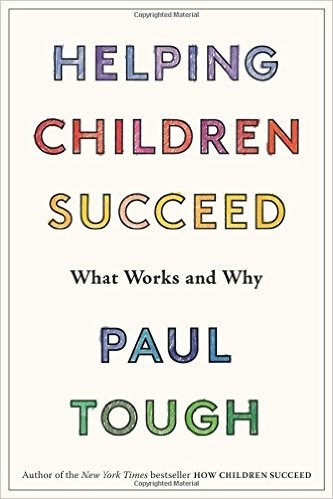
1. Adversity
- As of 2013 more than 50% of US students are eligible for a free or subsidized school lunch. As this number continues to climb, the challenge of teaching low-income children can no longer be considered a side issue in American education. Helping poor kids succeed is now, by definition, the central mission of American public schools. Achievement gaps between poor and non-poor kids have remained the same by some measures and increased by others in spite of the fact that closing the gaps has been a government priority for decades. If you work with kids who are growing up in poverty or other adverse circumstances, you know that they can be difficult for teachers and other professionals to reach, hard to motivate, hard to calm down, hard to connect with. This book revisits the research that Paul wrote about in How Children Succeed. It extends his reporting to new discoveries, new models, and new approaches to interventions with children, both inside and outside the classroom.
2. Strategies
- Social-science literature is rife with examples of small, high-quality programs that seem to become much less effective when they expand and replicate. Therefore, the aim here is to examine interventions not as model programs to be replicated but as expressions of certain underlying ideas and strategies. The second challenge is to find strategies to address the problems of disadvantaged children. Here we consider the developmental journey of children, and particularly children growing up in circumstances of adversity, as a continuum — a single unbroken story from birth through the end of high school.
Posted in Book Summaries, Education Books, Leadership Books | Comments Off on Helping Children Succeed: What Works and Why by Paul Tough
Wednesday, April 18th, 2018
How luck Happens: Using the Science of Luck to Transform Work, Love, and Life by Janice Kaplan and Barnaby Marsh lays the groundwork for the new field of luck studies. This is a fine piece of qualitative research that can help you and your kids understand how to lead a luckier and happier life. Parents and leaders alike should read this groundbreaking book to help themselves and everyone they touch.
Preface
- We start with the legend of Harrison Ford who was working as a carpenter at the home of the young director George Lucas who was working on his first film American Graffiti. George got to know him a bit and gave him a small part. The rest is history. Certainly, Mr. Ford got lucky so the big question is how do we make our own luck? The idea is to put enough of the right pieces in place so you can take some of the onus off of random chance. Time to join the thrilling journey of discovery that Janice and Barnaby took during the last year that they claim will help you learn the approaches they uncovered that are almost guaranteed to bring more luck your way.
Part One – Understanding Luck – 1. Prepare to Be Lucky
- Shortly after their research began, Janice realized that real luck happens at the intersection of chance, talent, and hard work. Chance is never enough. You also need a bias towards action. You have to be willing to try as you focus on the things that you can control. Since this field is brand new, Janice and Barnaby couldn’t comb through existing research. They had to do their own.
2. Some People Have All the Luck—And You Can Be One of Them
- Most people (67%) think that working hard contributes to lucky outcomes. They (67%) also think that you can get lucky by being curious. Here we have a story about a girl who found a four-leaf clover, a one in 10,000 chance. Her friends told her how lucky she was, but she made her own luck by being persistent and knowing that there would be a lot of failure along the way. Getting the right information is also necessary, which might mean just asking one more question. The most important ability may be to pay attention and notice opportunities. Good attention is also flexible, which allows us to switch between narrow and open focus.
3. Pick the Statistic You Want to Be
- While about one-third of Americans are obese, this doesn’t mean that your odds of being obese are one out of three. This is a clear example of where you can make your own luck depending on the diet and exercise program you choose. It’s important to take risks, but not all risks are worth taking so you must size up the risks prior to forging ahead. Improbable things are likely to happen and they are not likely to happen to people who don’t spend some time outside of their comfort zone.
Posted in Book Summaries, Education Books, Leadership Books | Comments Off on How luck Happens: Using the Science of Luck to Transform Work, Love, and Life by Janice Kaplan and Barnaby Marsh
Tuesday, June 5th, 2018
How To Bake ∏: An Edible Exploration of the Mathematics of Mathematics by Eugenia Cheng uses classic baking recipes to illuminate many math concepts. It helps take math into the real world as it helps to make some math seem easier to its readers. At the very least, it should find its way into the hands of every math teacher and serious math students.
Part I: Math – 1. What Is Math?
- Like all chapters this one starts with a recipe since like recipes math has both ingredients and methods. In math, however, the method being used is probably more important than the ingredients. Once you find a technique in math you can always find more things to study with it. The two key concepts here are abstraction and generalization. Math is abstract in that it studies ideas of things, rather than real things. The invention of numbers to represent things was perhaps the first-ever process of abstraction.
2. Abstraction
- To do math you have to step away from reality. This is where math finds its strength. The idea that two things cost twice as much as one thing applies to all things, for example. Here we have a process that generalizes. Maps are abstractions of reality. The key for map makers is to find the most appropriate level of abstraction for the given moment. There are a number of math problems here that show how procedures work regardless of the specific numbers involved.
3. Principals
- When making any recipe, it helps to understand the principals of the ingredients and finished products you are working on. Understanding the principles allows you to take shortcuts and substitute ingredients without ruining everything. Recipe books, however, rarely explain such principles. Understanding is power in cooking and in math. At the heart of math is the desire to understand things rather than just knowing them. The chapter goes on to spell out the principals for the natural numbers we use for counting.
4. Process
- Flour, butter, water, and salt can make a delicious puff pastry, but only if you follow a specific method. Math requires the proper method also and further requires that almost nothing is basic or given. The rules of logic must be followed. Eugenia shows how you can make two mistakes in math and still get the correct answer. At the heart of math is the need to understand things rather than just knowing them. In other words, the means justifies the end.
Posted in Book Summaries, Education Books, Leadership Books | Comments Off on How To Bake ∏: An Edible Exploration of the Mathematics of Mathematics by Eugenia Cheng
Wednesday, January 23rd, 2013
How To Deliver a TED Talk: Secrets of the World’s Most Inspiring Presentations (© 2012) by Jeremey Donovan, gives you a step-by-step guide to doing your own inspiring TED-style presentation. If you haven’t seen a TED Talk it’s time to start. Click the icon below to purchase this quick, quality read.
Posted in Book Summaries, Business Books, Education Books, Leadership Books | Comments Off on How To Deliver a TED Talk: Secrets of the World’s Most Inspiring Presentations
